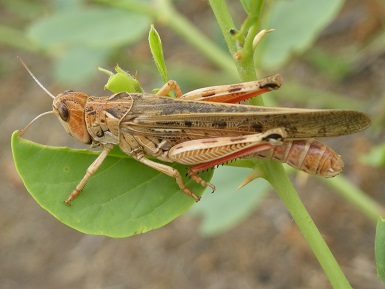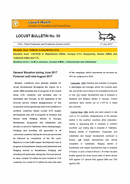General Situation during September 2012 Forecast until mid-November 2012
Locusts were progressively disappearing from all Caucasian and Central Asian (CCA) except in Uzbekistan where infestations of the Asian Migratory Locust (LMI) were reported around the Aral Sea. Only 600 ha were treated this month in the Russian Federation. The situation was calm everywhere and no further development is expected...
General Situation during August 2012 Forecast until mid-October 2012
As locust pests were completing their life cycle, the campaign ended in all Caucasian and Central Asian (CCA) countries except in Armenia and the Russian Federation, where control operations were still being undertaken. Remaining locust populations will disappear progressively and no further development is expected this year. Nevertheless, the situation...
General Situation during July 2012 Forecast until mid-September 2012
With progressive fledging of the three locust pests, the 2012 locust campaign was coming to an end in most Caucasian and Central Asian (CCA) countries. However, the current situation continued to be serious in the Russian Federation, where more than 1.6 million ha were treated (an increase of 45% as...
General Situation during June 2012 Forecast until mid-August 2012
The locust situation improved in June in southern Caucasus and Central Asia (CCA), where control operations were almost completed but deteriorated in the north, in particular in Kazakhstan and in the Russian Federation, where more than 3 million ha were treated during the month. Hopper development of the three locust...
General Situation during May 2012, Forecast until mid-July 2012
As anticipated, the locust situation deteriorated in May in Caucasus and Central Asia (CCA), where more than 716,000 ha were treated (6 times more as compared to April). Hopper development was on progress or completed in all countries. Moroccan Locust (DMA) adults formed mobile groups and swarms...


